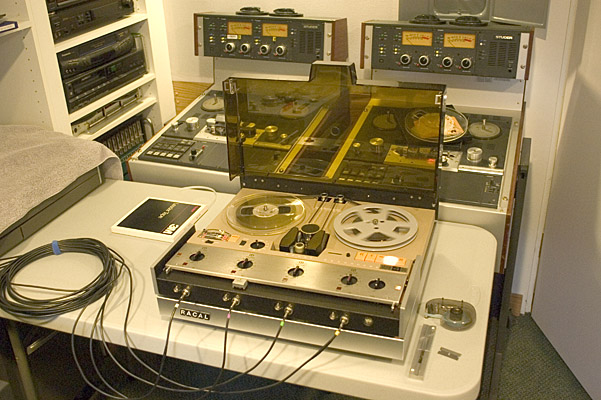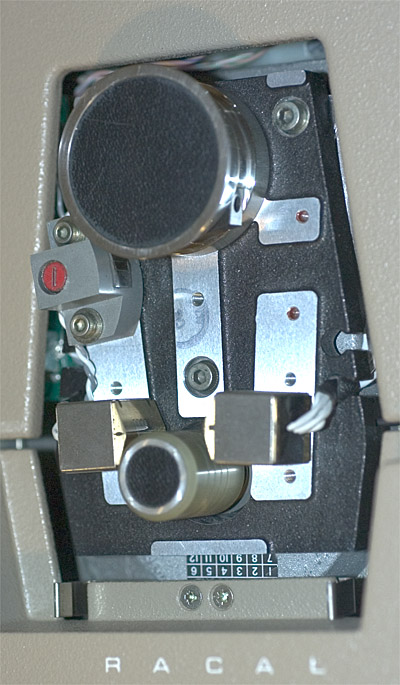I spent days trying to get Shamrock 031 to play without much success. Since this is an Ampex factory budget brand (probably non-spec premium tape) I thought that it might be suffering from Sticky Shed Syndrome. I baked it for 12 hours and it still squealed. I then tried my usually successful cold playing technique and it still squealed. Cold playing has worked successfully with 3M 175 and Sony PR-150.
I was getting rather frustrated and since it was a four-track tape and one of the techniques that is supposed to reduce squeal is to play the tape faster, I dragged out my Racal Store 4DS instrumentation recorder which has a 75,000 Hz bandwidth at 15 in/s and played it at 15 in/s and digitized it at 88,200 samples per second. After slowing it down 4x and ending up with a 10 kHz bandwidth (which I subsequently truncated to 5 kHz since there was no useful information above that, but lots of noise–same as the non-squealing portion of the real-time transfers on a Studer A810).

Why did it work? — That is the big question. I suspect lower tape tensions than even the reduced-tension settings on the A810 and different head geometry were major factors, plus overall shorter unsupported tape spans, and few stationary objects contacting the heads, but there was still an erase and record head which had been removed from the A810. I think that the 4x speedup helped greatly. I also turned up the outside air (how I cool the studio in the winter–I like my fresh air this way–in the summer, of course, it’s connected to the central air conditioner) which kept the tape and recorder cool. I also think that the Racal Store 4DS doesn’t heat the tape and head assembly as much as most pro audio recorders do.
I received great support and wonderful ideas on both the Ampex and Studer mailing lists. Special thanks are due Jay McKnight who has been a supporter of speeding up the tape to eliminate squeal (which is really stick-slip and causes frequency modulation of the audio). I had avoided the 4x speedup on the A810 because of the signal electronics bandwidth limitations. While in this case, 20 kHz would work fine, I wanted to digitize with 40 kHz bandwidth to make sure I wasn’t losing any highs.
There may be room for misunderstanding as to the precise topology of the Racal Store 4DS tape path. Here is a brief explanation. The tape comes off the top of the supply reel and around the top-mounted tension sensor which is a roller. The tape then is unsupported from that roller until it enters the head area. The large diameter device at the top of the head area is merely a tape guide. It is both a “face” and “edge” guide both in and out and does not rotate. Next the tape passes the erase and record heads on the left side. The heads are on the outside facing the centre. Then the tape turns 180 degrees around the capstan motor’s soft capstan. The capstan also drives the mechanical footage counter. As the tape heads up, it passes the reproduce head and then encounters the tape guide on the other side. It then goes over the tension roller at the top and onto the takeup reel. The reel servos are interesting as they are fast and can drive the tape in either direction. This is useful since there is no pinch roller. The photo below shows a closeup of the head area.

As an aside: you can infer from the above picture that the complement of tape machines in my studio changes. The Studer A810s in the background are being set up to record full-track mono archival reels of some cassettes.
Before running out and purchasing one of these machines, please read this post:
https://richardhess.com/notes/2008/01/09/using-the-proper-toolsand-dont-try-this-at-home/